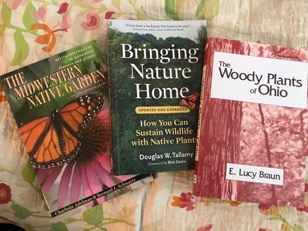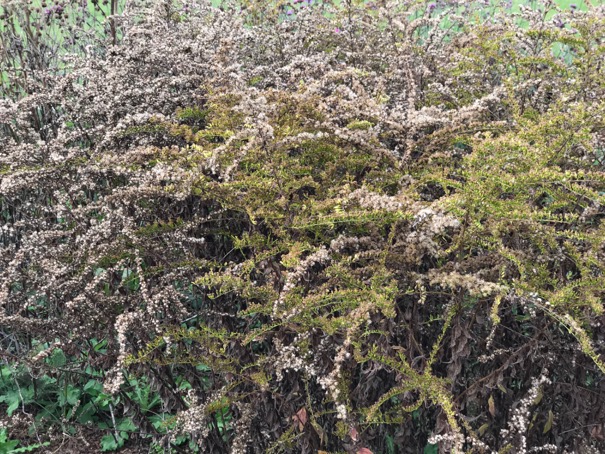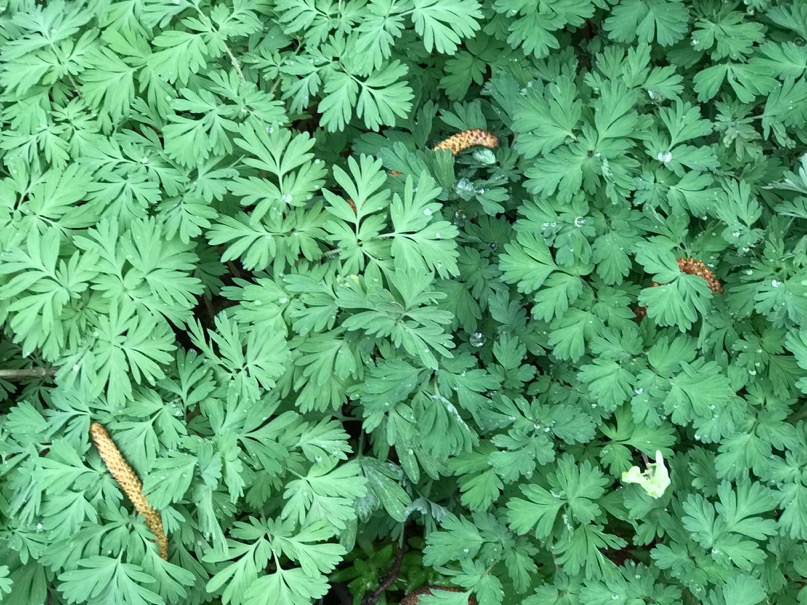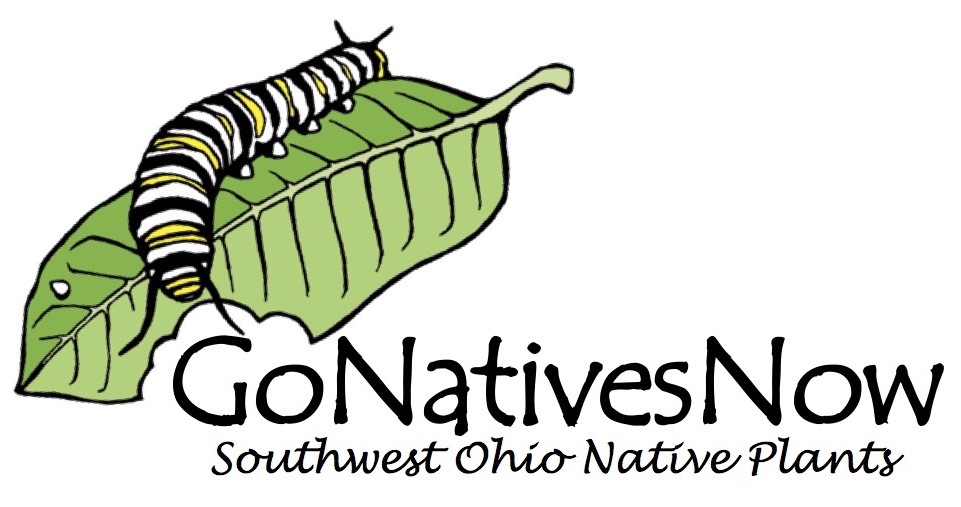February 2018
Plant the Right Tree for Your Soil
02/16/18 11:21 AM
OK, anybody who knows me knows that I love trees. I have favorite trees wherever I go. If you don't have any trees in your yard, plant one.
First figure out what kind of soil you have. Go to the US Soil Survey website, go to your property, and study the charts. Use this uTube video created by Solomon Gamboa to navigate the website.
Basic Web Soil Survey Guide
Next use this spreadsheet that lists what trees grow best in what soil conditions.
Tree-Soil Spreadsheet
This is useful for anybody (yards, private property or parks) planting trees in our area. Two steps: you use/study the Soil survey data first, then this spreadsheet to find tree species that will grow best in the soil you have.
Why would you do this? You’re looking very long term with trees. You want good conditions for trees down the road for decades, centuries even. With trees, it’s very difficult to change your mind and move them, especially after they get established. You have to kill them and start over. Bad news. It’s difficult to amend the soil and change it to make the tree happy. It’s better to start with the right trees for the soil you have.
First figure out what kind of soil you have. Go to the US Soil Survey website, go to your property, and study the charts. Use this uTube video created by Solomon Gamboa to navigate the website.
Basic Web Soil Survey Guide
Next use this spreadsheet that lists what trees grow best in what soil conditions.
Tree-Soil Spreadsheet
This is useful for anybody (yards, private property or parks) planting trees in our area. Two steps: you use/study the Soil survey data first, then this spreadsheet to find tree species that will grow best in the soil you have.
Why would you do this? You’re looking very long term with trees. You want good conditions for trees down the road for decades, centuries even. With trees, it’s very difficult to change your mind and move them, especially after they get established. You have to kill them and start over. Bad news. It’s difficult to amend the soil and change it to make the tree happy. It’s better to start with the right trees for the soil you have.
Resource Musts
02/08/18 03:53 PM
Here are three books that all native plants and nature lovers must have in their personal library:
- Bringing Nature Home: How You Can Sustain Wildlife with Native Plants, by Douglas W. Tallamy. This is the book that upended how I look at yards and gardening. It helped me see gardens in a new way, as home and food for wildlife as well as lovely plants to admire for their beauty and aesthetic value. Dr. Tallamy is an Entomologist who believes that we all can make a difference for wildlife and gives tips how to begin. In my book Doug Tallamy wrote, "Garden as if life depends on it."
- The Midwestern Native Garden: Native Alternatives to Nonnative Flowers and Plants, by Charlotte Adelman and Bernard L. Schwartz. This book helps you transform your existing ornamental gardens to native ones by providing lists of native plants with similar form, color, and growing conditions to the ornamentals you may have now. Five years ago, my gardens were approximately one-third native. Now they are more than four-fifths native. This book helped me do this.
- The Woody Plants of Ohio, by Lucy Braun. Trees are so very important to wildlife and to us. Dr. Braun provides so much more information than simply a guide to the trees growing in Ohio. She will help you figure out what kind of tree will grow best where you live and what tree will provide the most food for wildlife. If you can only plant one native, make it an oak.

Natives Monarchs Prefer
02/07/18 11:58 AM
This paragraph comes from the Beavercreek Wetlands Association (BCWA) newsletter, the Spotted Turtle. GoNativesNow is offering Boneset this year for the first time. As you will read it is a very valuable plant to the Monarch butterfly.
“For the first time since BCWA established a Monarch Waystation at Hagenbuch Reserve, we tagged more monarchs there than at Koogler Wetland/Prairie Reserve, where our annual tagging program has been conducted since 2010. An interesting observation was made – at Koogler, monarchs were nectaring on the Maximillian sunflowers in early to mid-September, then asters and goldenrods in late September. However, at the Waystation, the monarchs were strongly attracted to a native plant called tall thoroughwort, also known as tall boneset (Eupatorium altissimum), over all of the other flowering plants. Even when the thoroughwort was well past prime and there were just a few remaining flowers, the monarchs still sought those out and ignored the asters and goldenrods in peak bloom. There is an explanation, provided by a local expert – the Eupatorium species provide an alkaloid used by many butterflies and moths for reproduction (pheromone production) and sequestered as a toxic compound for protection. This shows the value of a plant that most people would consider to be a weed!”
—Debbie Karr
As you may know, BCWA is one of the most successful non-profit land trusts in our area. They work "to preserve and protect the wetlands and uplands along the corridors of the Beaver Creek and Little Beaver Creek" in Dayton. There are many parks you can visit to see native plants in a natural setting.

“For the first time since BCWA established a Monarch Waystation at Hagenbuch Reserve, we tagged more monarchs there than at Koogler Wetland/Prairie Reserve, where our annual tagging program has been conducted since 2010. An interesting observation was made – at Koogler, monarchs were nectaring on the Maximillian sunflowers in early to mid-September, then asters and goldenrods in late September. However, at the Waystation, the monarchs were strongly attracted to a native plant called tall thoroughwort, also known as tall boneset (Eupatorium altissimum), over all of the other flowering plants. Even when the thoroughwort was well past prime and there were just a few remaining flowers, the monarchs still sought those out and ignored the asters and goldenrods in peak bloom. There is an explanation, provided by a local expert – the Eupatorium species provide an alkaloid used by many butterflies and moths for reproduction (pheromone production) and sequestered as a toxic compound for protection. This shows the value of a plant that most people would consider to be a weed!”
—Debbie Karr
As you may know, BCWA is one of the most successful non-profit land trusts in our area. They work "to preserve and protect the wetlands and uplands along the corridors of the Beaver Creek and Little Beaver Creek" in Dayton. There are many parks you can visit to see native plants in a natural setting.

Dutchman's britches
02/06/18 10:12 AM

With such lovely foliage, who needs the flowers? The small white flowers give this plant its name. They look like small pantaloons upside down. It blooms early in the spring in the shade of a bush or tree. After the temperatures warm up, the plant disappears until next spring. It spreads slowly and can be divided after several years. Ddutchman's britches is a new native plant offering this year.
New Spring Natives
02/05/18 04:03 PM
| GoNativesNow is now offering 20 new spring blooming natives. Quantities are limited. We will feature our spring natives in the next several blog entries. This is wild ginger. It makes a great ground cover and will grow under most trees. The flower is a delicate dark red blossom that opens close to the ground where it is pollinated by ants. The plant spreads slowly by sending out roots underground. Wild ginger is a new native plant offering in 2018. |

 Southwest Ohio Native Plants
Southwest Ohio Native Plants